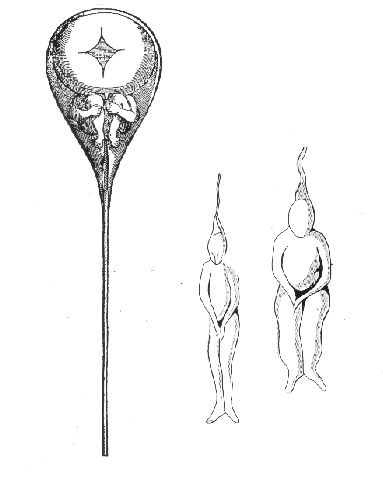One of the joys of biology lies in appreciating how strange and varied the world is. When humanity starts to feel claustrophobic, you can imagine the life of an albatross, aloft over the ocean for most of her life, searching out schools of delicious fish by their scent; or a cuttlefish, flashing colored signals at his companions as he shoots through the currents, flexible tentacles waving. When the world feels narrow and limiting, you can remember that clownfish change sexes depending on their place in the dominance hierarchy, with males becoming female when they advance to the position of top dog.
Yet—amazingly—biology used to be even wilder. Before satellite tracking and genetic analysis, before “biology” was a recognized science at all, natural philosophers looked at a perplexing natural world and invented some truly outside-the-box explanations for what they saw.
Some of these are fairly well known: for example, the idea that there is a “homunculus”—a tiny human—inside the head of each human sperm cell.
To be fair, we now know that sperm (and eggs, etc.) contain the genetic blueprint for building a human, which isn’t all that far off from containing a tiny human.
But my favorite old science myth involves—of course!—birds.
Continue reading →







